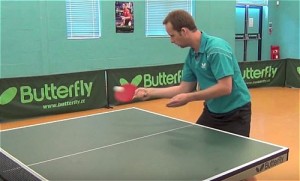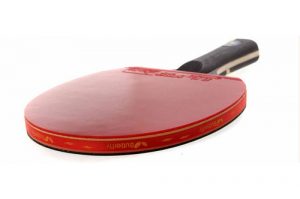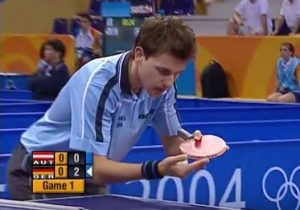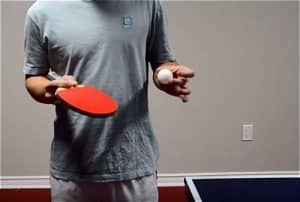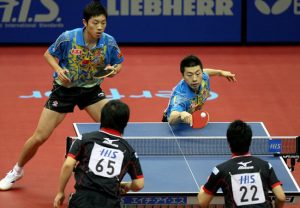Sometimes we face a player who loves to defend. He continuously puts your shorts on the table, making you tired and forcing you to make mistakes. You start getting frustrated and wonder how to play with such a player.
Well, I will share what my experience has been with a defensive player. When you come face to face with a defensive player, I think a good shot would be one with a lot of spin on it.
Tackling spin is tricky as you have to judge the spin type and power. I suggest you try spinning the bowl at different angles and see what your opponent does. If he is surprised with your approach, you can attack the next shot.
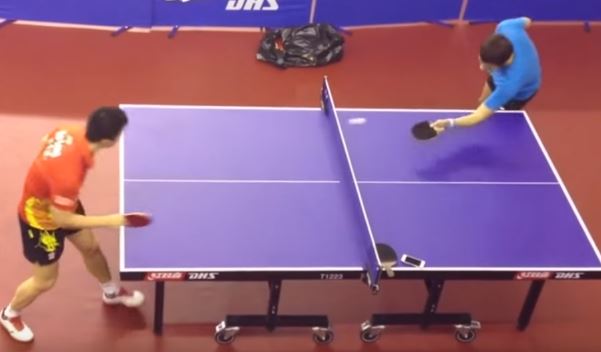
Table of Contents
Play Against Long Pimpled Players
I play lots of choppers and long pimpled players. I find topspin and push consistently very useful and outlast the choppers. If you find it hard to topspin the ball against heavy chop, you must time the ball as you see the ball spin it early. When I play against a (good) defensive player, I don’t just wait for an excellent ball to attack: I try to force such a ball.
Most defenders tend to push the balls all the time if they don’t have to block, so you always have backspin to contend with. That’s why you have to vary the balls you return while pushing! Next to placing your balls (forcing your opponent to move), also try to vary speed and spin. It’ll make it more difficult for your opponent to return a ball that you can’t attack.
Don’t Hesitate
When he finally gives you an excellent ball to attack, do it. Don’t hesitate. Attack! Place the ball on either the elbow of your opponent or where he will not stand. By that, I mean: watch where your opponent is moving to. That’s where he expects you to place the ball. Putting the ball as far away from that point as possible is vital. Do it right, and you may have already won your point.
If you have trouble placing your first ball, is your opponent fast enough to still get to the ball, or you don’t know where your opponent is getting the ball (though trying to play the elbow is usually a good bet), don’t despair!
The ball comes back. That means you get another shot. Again, vary your ball not only in placement but also in speed and spin. It will again make it more difficult for your opponent to return the ball.
If your opponent still keeps returning your balls, but you finally get a good chance: smash it! Once you get to smash the ball, you are in the dominance of the point. Of course, your opponent might anticipate this and successfully start defending this attack, even though this is hard for most defenders.
Again, vary your attack with this shot. Though it is harder to vary in speed and even impossible for a spin, you can do a lot with placement. If you’ve gotten to this stage, you will have pushed your opponent away from the table.
It means that if you start placing left/right, you will force your opponent to run, fatiguing him. Or suddenly play a short ball near the net, forcing him to come forward again.
It is a series of strategies that should work against most defenders, but of course, you will have to train for every phase of it. My suggestion is to simulate it during training.
Don’t Keep Attack With Full Speed.
Also, I don’t recommend just attacking with all speed and spin you have. The main difficulty is trying to judge the amount of speed and spin on the ball. If you consistently play the same ball, this becomes easy to predict and act on. That’s why you should vary on those factors.
Other than that, it depends on how consistent they are and how good they are against smashes. Either way, try not to get into a long pushing rally before you attack. You may try to serve medium length with no spin, loop, and then smash, either wide or to the elbow. If you are strong enough, this will make it easy on yourself.
Alternatively, you will have to mix it up, consistent loops, to drive them away, then a drop shot then hit long to their body, mix up the spins on the loops as well, see what works, put in floats and hits with no spin.
It’s also worth checking their
Variation in your game is vital against defensive players. Choosing the spin and pace of the ball to disrupt their rhythm is critical. I usually play a slower opening loop and grease the ball around until I get one that I can flat hit.
It doesn’t usually take me that long. I like playing defensive players. Remember, you can also return the ball, and you may find it easier to finish the point attacking their return of that ball.
Heed on Ball Placement
Another important thing is placement. Putting defensive players on their back foot and off-balance is essential. Hence the speed and spin variation to move them in and out from the table and, of course, left and right placement also!
Before you think about tactics and where to hit the ball and how, and change of rhythm and placement, etc….. you first and most importantly have to learn how to attack against backspin.
If you got that, you attack every ball except if the player is so good that he/she puts so much backspin into the ball where you have to chop 1 ball and then attack again. It is all about attack, attack, attack. And that is with heavy spin, not smashes, but giving your opponent a lot of loops.
If you know how to play like this but still don’t win, you will need to think about other tactics. But usually, this is enough if you can loop attack continuously without making too many mistakes.
Nathan Vandecauter
Related post:

Warren Davies

